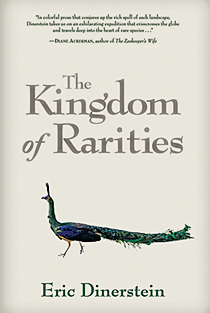 Why are we more likely to see a sparrow than a condor, a rabbit than a jaguar? The old explanations remain true, notes Dinerstein, an award-winning conservationist at World Wildlife Fund-U.S. There will always be more prey than predators, and more generalists than specialists, like the 12 species of frogs who live only on a single Haitian mountain. (Solitary mountains, which have vertically as well as horizontally isolated ecological niches, boast a disproportionate percentage of the world’s rarities—Tolkien was on to something when he put Smaug, the last dragon, on the Lonely Mountain in The Hobbit.)
Why are we more likely to see a sparrow than a condor, a rabbit than a jaguar? The old explanations remain true, notes Dinerstein, an award-winning conservationist at World Wildlife Fund-U.S. There will always be more prey than predators, and more generalists than specialists, like the 12 species of frogs who live only on a single Haitian mountain. (Solitary mountains, which have vertically as well as horizontally isolated ecological niches, boast a disproportionate percentage of the world’s rarities—Tolkien was on to something when he put Smaug, the last dragon, on the Lonely Mountain in The Hobbit.)
But other factors are starting to gain attention among biologists: beauty, rarity and human desire tend to converge, leading to additional human pressure that reaches well beyond the habitat loss and direct killing bedevilling all wildlife. The question matters, argues Dinerstein, because ecological footprint is not necessarily linked to numerical abundance. A mere 25 per cent of species—humans, robins, rats and roaches prominent among them—account for 95 per cent of the individual creatures on Earth. That means, by simple math, that three-quarters of species are rare. Their role in preserving the common ones, Dinerstein asserts, needs far closer consideration than it has received.
In prose that is both lyrical and exact, he takes readers through various “motherlodes of rarities” in search of answers, from Cuba’s Zapata Swamp through the jaguar-dense Madre de Dios region of Peru to the still little-known Vietnamese jungle. But his heart lies in Bhutan, which leads the world in setting aside virgin habitat, complete with wildlife corridors, for its rich biodiversity. The Himalayan kingdom forgoes a lot of economic growth for that, but also makes a fortune from ecotourism. The human lust for rare creatures, which has killed so many over the years, may yet save the rest.
Visit the Maclean’s Bookmarked blog for news and reviews on all things literary